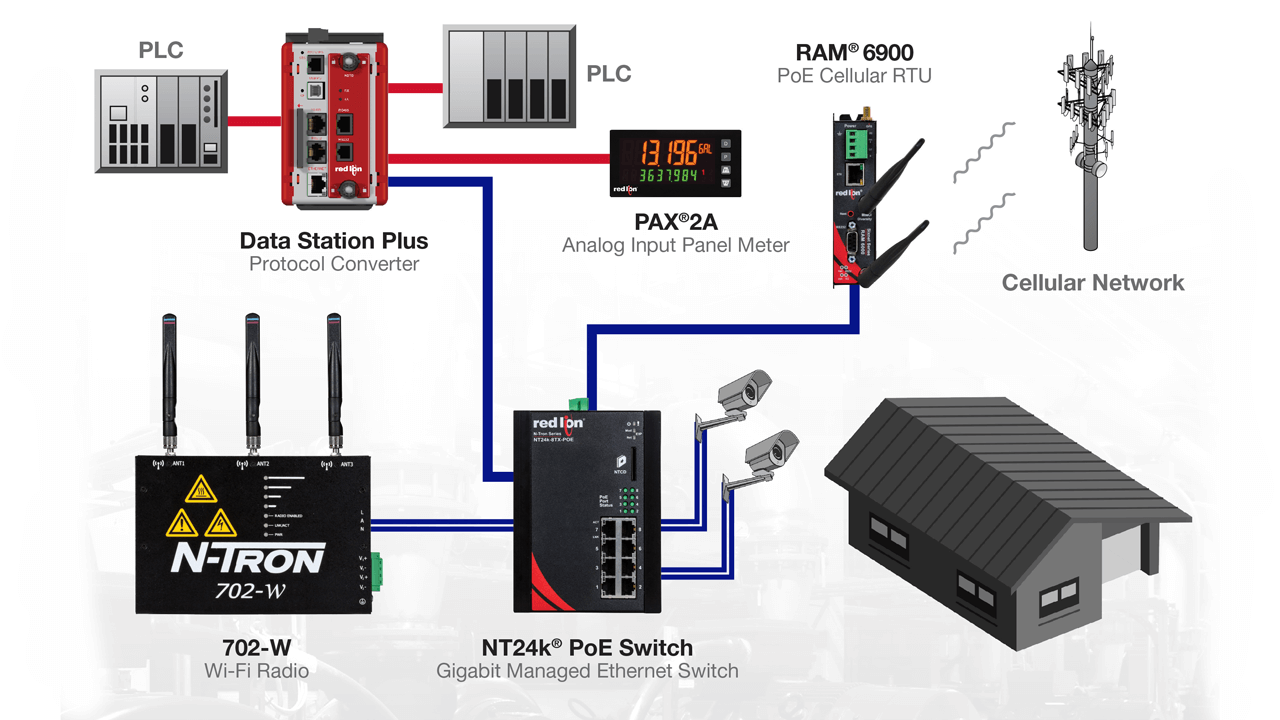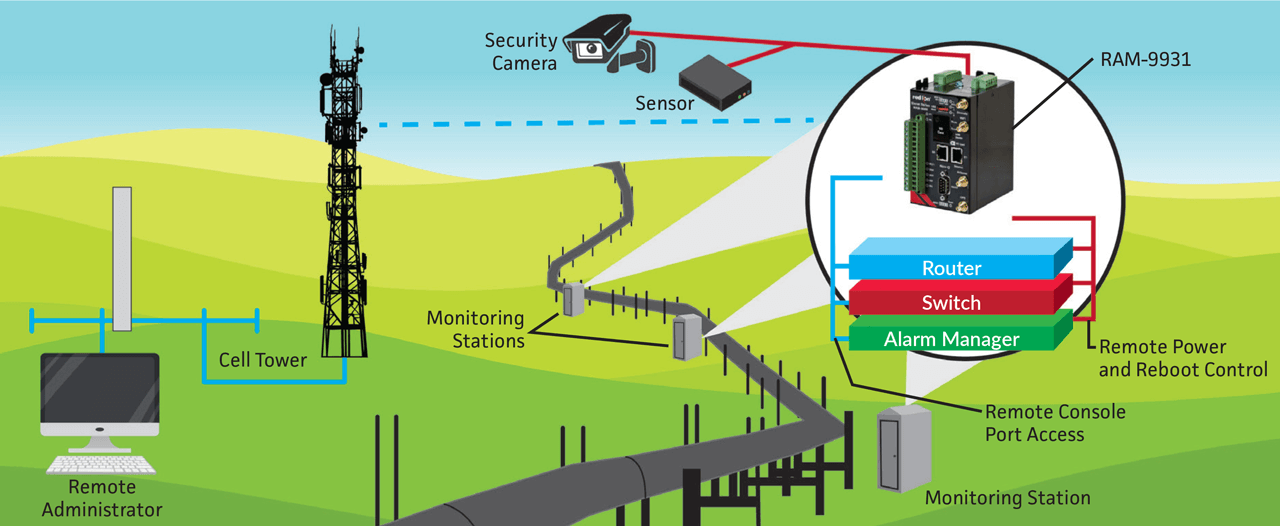ApplicationsNovember 12, 2019
Overcoming an ineffective wireless radio infrastructure

A new remote communications system provides pipeline flow control and monitoring of municipal water supply and four pump stations. A combination of 4G LTE cellular communications, along with a multi-carrier cellular RTU with GPS and control, seamlessly monitors each RTU cabinet remotely.
Use of a multi-carrier cellular RTU enabled a municipality operating an eleven mile pipeline to deploy a new system architecture for control and monitoring of its water treatment facility. A web-based event engine that can trigger I/O or send SMS messages based on real-time data for monitoring remote assets.
Definition of problem
Quantum specializes in delivering engineering and automation control system services for industrial and manufacturing facilities which often have challenges with geographically remote locations. No matter how remote, these industries depend on constant communication. For many years, the solution has been unlicensed wireless radio equipment either connected serially or via the Ethernet.
With the emergence of Ethernet-connected devices, certain wireless frequencies, including 900MHz radio communication, cannot support high-speed and high-bandwidth Ethernet traffic. These radios can only achieve a maximum data rate of 1024 Kbps, extremely slow compared to Wi-Fi (802.11) and 4G LTE data rates. Slow data rates can cause delayed communications, some which could be urgent like alarms, supervisory commands, and more. The challenge is complicated by repeater radios, inefficient PLC messaging schemes, flat networks and excessive polling rates.

Illustration above shows modular cellular-based network with control at the edge. Equipment at remote sites connect to a cellular RTU, which has built-in processing capabilities. So if the network is unresponsive, the cellular RTU can still perform all control activities.
This scenario is not ideal for critical applications that control and monitor equipment remotely. These limitations needed to be corrected by transitioning to 4G LTE or Wi-Fi wireless networks for a new, more robust wireless communication infrastructure.
For this specific project, a municipality operates an 11-mile pipeline, which crosses two other cities to deliver water to a treatment facility. Four pump station RTU cabinets sit along the pipeline, controlling and monitoring the flow of water.
To provide communications throughout the 11 miles, six 900MHz radios were in use to allow the individual RTU PLCs and water treatment plant to be in touch.
Since the initial communication process was put in place, urban growth has begun to affect the performance of the wireless carrier. Additional obstacles were also present, including a 650 ft. elevation difference between the first RTU and treatment facility.
Inconsistent and unreliable communication made it almost impossible to control the four pump stations remotely. The communication issues were critical enough that it represented a significant risk regarding water production and delivery. Quantum consulted with the city and recommended that the town move to a 4G LTE cellular network to communicate.
Communication solution
To enable the new communication system, Quantum leveraged the existing infrastructure while also infusing modern technology to solve the issues. This required the necessary 4G LTE equipment, working with a cellular provider, and deploying a new architecture.
Critical to this was the use of a multi-carrier cellular RTU with GPS and control. Red Lion supplied Quantum with a RAM 6000 cellular RTU. These RTUs have up to five Ethernet ports and a RS-232 serial port. The system uses a web-based event engine that can trigger built-in I/O or send SMS messages in response to real-time data. The device was built to perform advanced control and communications for monitoring remote assets.
Since Quantum implemented the new network, the city no longer has to worry about its aging and ineffective wireless radio infrastructure. They now have a dependable communication system that allows them to seamlessly monitor each RTU cabinet remotely. The city can now focus all its efforts on providing clean drinking water to its citizens.

